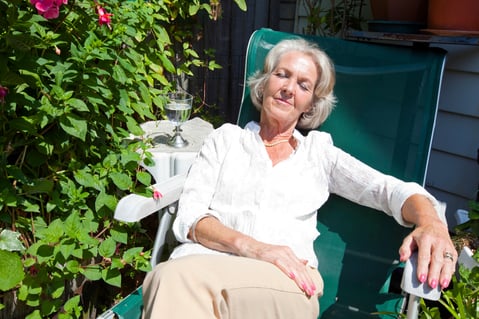The Sun is Out – Go Get Your Daily Dose of Vitamin D
Jennifer Miller | Jul 21, 2016
During the short days of winter, getting enough Vitamin D into your day can be a bit of a struggle. You see, the best source of this essential nutrient isn’t in a food you can eat or a pill you can swallow. It occurs naturally in the sun’s rays.
That’s right, the sun produces Vitamin D, which we absorb through our skin. During the summer months, a little time spent in the sun can provide a full daily dose.
Why is Vitamin D Important?
 This unique nutrient protects against many health problems. Getting your recommended daily dose of sunshine provides protection from:
This unique nutrient protects against many health problems. Getting your recommended daily dose of sunshine provides protection from:
- Stroke and heart attack
- Weakened immune system
- Multiple types of cancer
- Weakening bones
- Weakening muscles
- Influenza
- Cardiovascular disease
Think of Vitamin D as an extra piece of armor that protects your body from a variety of ailments.
What Affects Vitamin D Absorption?
During late spring, summer, and early fall, around 15 minutes of sun exposure provides a full daily dose. While we can get more of this nutrient through supplements or eating certain foods like salmon, egg yolks, and fortified milks, the sun is the best option. While a few variables affect an individual’s ability to absorb this vitamin, there are a few steps you can take to meet your daily needs.
- AGE
Not long ago, Vitamin D deficiency was known as a problem for children and infants. Fortified foods came about as a way to prevent the development of rickets. Only recently, when testing became less expensive and more popular, did medical professionals realize how many adults were living with deficiencies.
Anyone over the age of 50 has an increased risk of developing a Vitamin D deficiency. This is due to our bodies’ becoming less efficient at converting sunlight into this nutrient. For seniors it can take up to 30 minutes of sun exposure to collect a proper amount.
- GEOGRAPHY
Living in the upper Midwest means we don’t experience sun rays as strong as people living closer to the equator. As a result, it can take a few more minutes to absorb the appropriate amount.
Additionally, those with ancestors from areas closer to the equator who may have more skin pigmentation are at higher risk for Vitamin D deficiencies because heavily pigmented skin repels the sun’s rays.
Safely Soaking Up the Sun
While sunlight is the best way for people to meet their Vitamin D requirements, too much sunlight can also be harmful. Remember to apply sunscreen or wear protective clothing when you’ll be exposed to sunlight for prolonged periods of time.
The summer sun is a source of joy for many. As we experience the sun’s warmth, it’s easy to see how it brightens our days, dries our laundry, and feeds our plants. All the while it also brings Vitamin D into our bodies.

